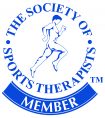Towards the end of my 4th squash match in 3 days, lunging in on my right leg I instantly feel my hamstring go. Initially I was upset, frustrated that in the final of a tournament I got injured! After some comforting words, I realise that the world isn’t ending, and I will just go through the rehab process I take people through on a daily basis and get back to fitness for the next big event. Thankfully, I was already signed up to the next tournament, less than 3 weeks away. Here begins the rehab journal of an injured sports therapist.
Day 0: The Injury
After the injury, winning the match didn’t seem like a possibility, every time I stepped forward on my right leg it was painful in the middle of my hamstring. I knew what had happened as soon as I felt the pain, the lack of training, the year off squash due to Covid, I was just looking for someone or something else to blame. In the end, it was my lack of training that had allowed me to get injured. This is a lesson I teach people frequently, and one I had evidently not paid much attention to over the last 12 months.
I did not ice the hamstring, nore did I stretch it, which is something I overheard the tournament physio telling one of the other players to do with a similar injury. Instead of icing I left the court, the building too and went to lay on the grass outside. I was furious now, no longer upset but angry. Basic psychology would tell you that I am angry to hide my frustration, as it was my fault I had become injured.
I did not Ice the injury as there is no evidence to suggest you should. Icing muscle tears does not speed up healing, it does not increase the end result in terms of strength or power. The theory is that if you reduce the inflammation then you will heal quicker, which just simply isn’t true. We get taught at university to ice injuries and “control the inflammation”. This hasn’t made sense to me since going to university and learning the healing process. Why would I want to reduce the inflammation, when it is the system that brings the building blocks to repair the muscle?
Arguably it reduces the amount of bleeding. As bleeding causes hypoxia (a lack of oxygen) and hypoxia causes necrosis (cell death), then less bleeding would lead to less cell death. But if we think of it like repairing your house, if you have all the building materials at the start, it will be finished as quickly as the builders can build. If we have to keep going out to buy more building materials, the building will take longer due to delays in lack of materials. Now the healing process isn’t as straigh forward as building a house, but I hope it gets the message across.
As the day went on, I, like everyone who just got injured, attemped to not use my right leg. Let me assure you, it isn’t possible. So it became about damage limitation, the muscle is freshly injured, I didn’t want to make it worse, so I avoided using it and stretching it as much as possible. With my care not to aggravate the injury, the pain gradually subsided, to the point when if I was lying or sitting down it wouldn’t give me any problems. It was only in moving it and trying to walk that would give me some minimal pain. After half a day of rest the pain had reduced, and I got to planning my rehab, which would commence the next day.


